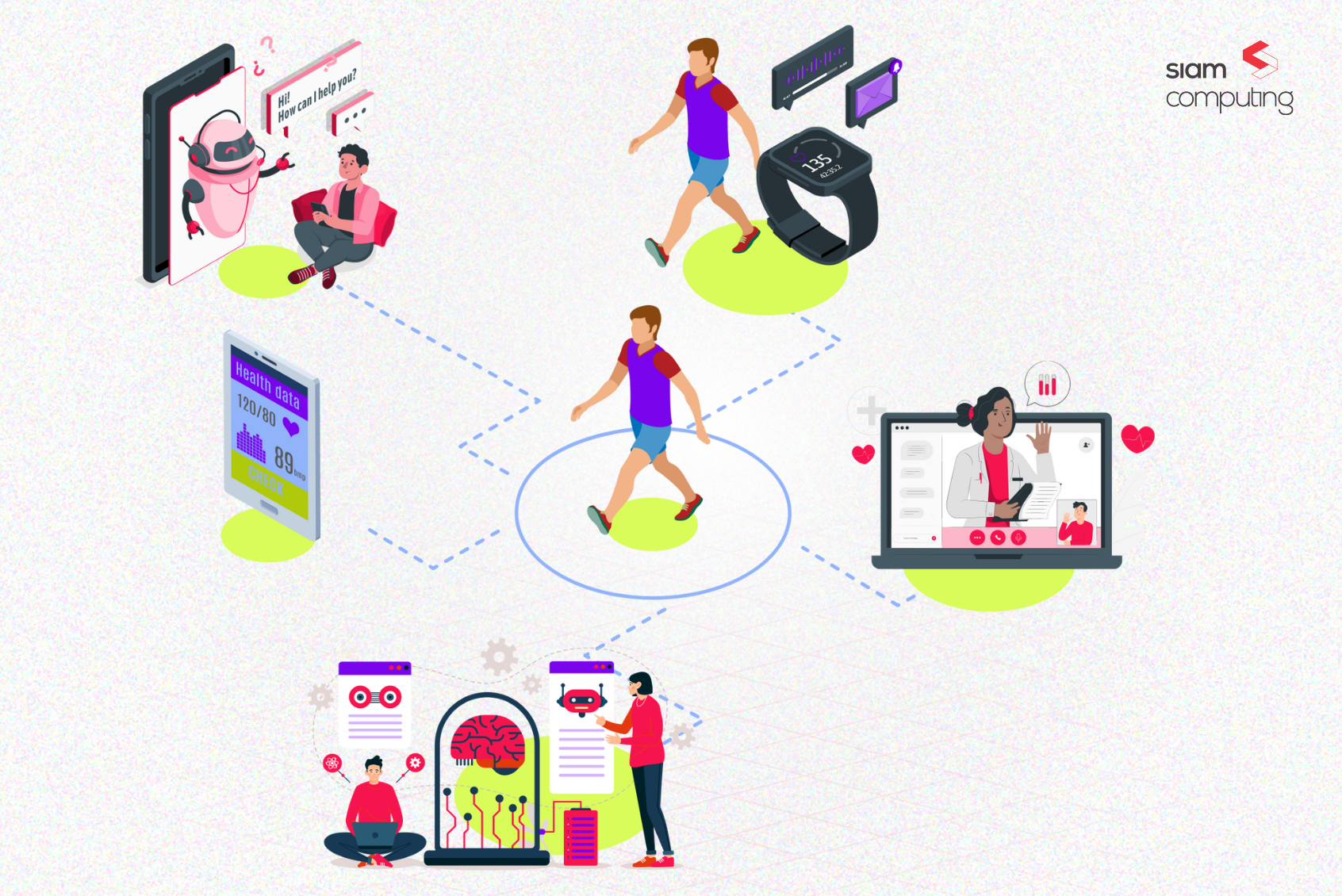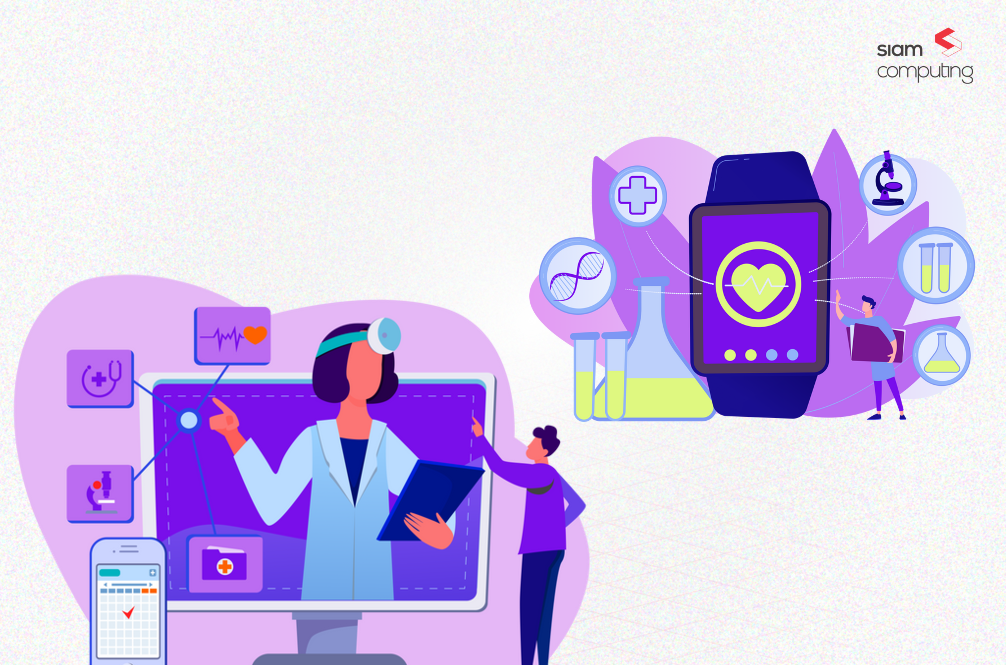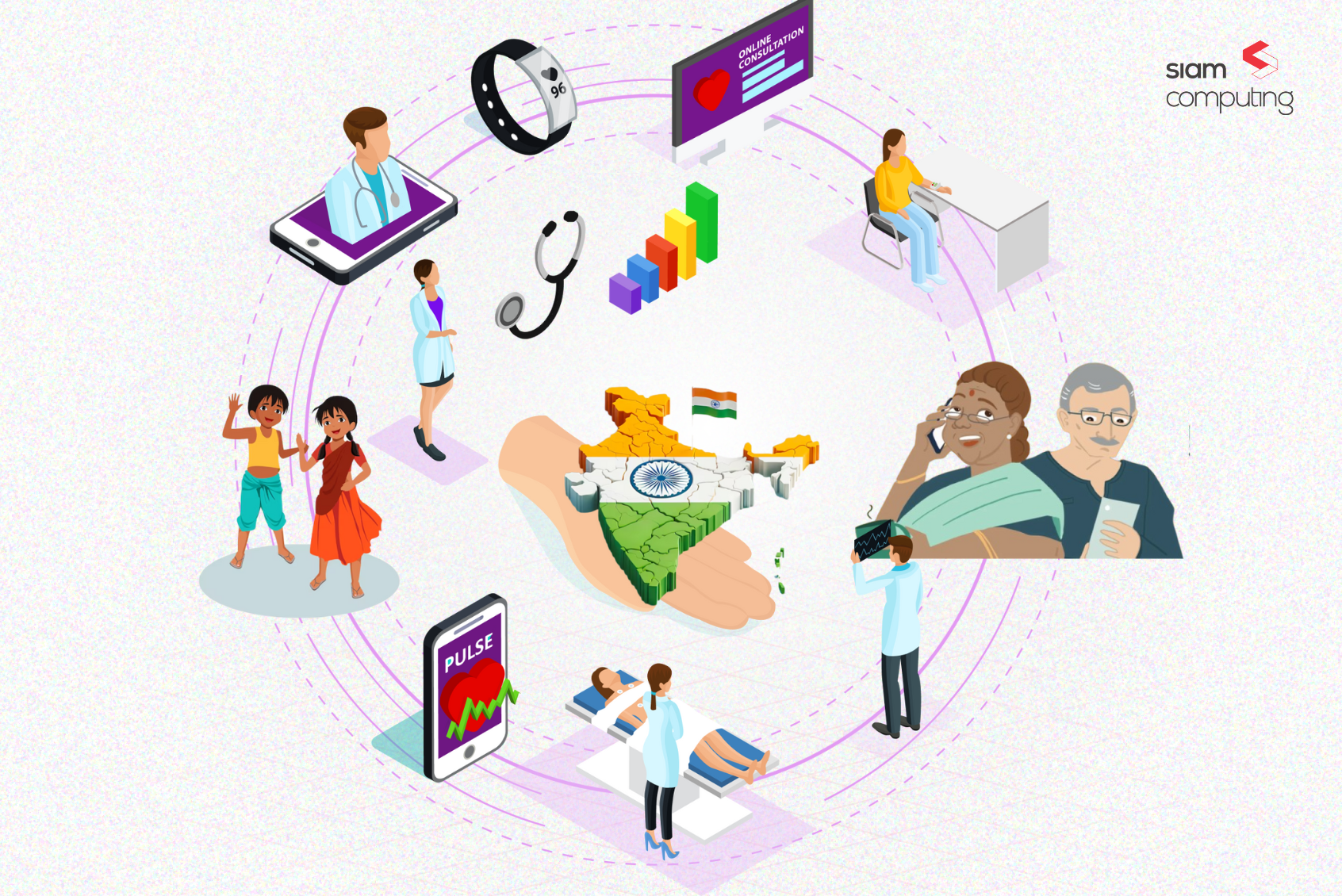The United States may have some of the best healthcare providers in the world and state-of-the-art advancements in medical technology, but if you ask any doctor if America offers seamless healthcare delivery, their answer would be, “Not quite.”
In her book, Fragmented: A Doctor’s Quest to Piece Together American Health Care, Yurkiewicz, an oncologist at Stanford Medicine, describes a behind-the-scenes reality in the US that the public rarely witnesses: doctors scrambling to collect patient records – papers sent by fax, compact discs sent through the mail (yes, they still exist), and electronic records too disorganized to be useful.
“Being a doctor means working in a constant state of being partially blindfolded, grasping at bits and pieces of a patient’s narrative to try to craft a coherent whole,” she writes.
The problem arises due to the siloed healthcare solutions used by the three key stakeholders in US healthcare – the payers (insurance companies), healthcare providers (hospitals, diagnostic centers, pharmacies), and beneficiaries (patients and their caretakers). It makes data sharing, interoperability, and communication almost impossible.
This is where a payer portal for insurance can be a game changer by unifying siloed systems and providing a seamless user experience. In this blog, we delve into the current state of US healthcare, explore the challenges in provider-payer collaboration, and outline how a well-designed payer portal can foster value-based care delivery.
Making sense of America’s fragmented healthcare system
The crux of it all started in 2010 when the US introduced significant health insurance reforms under the Affordable Care Act (ACA). It sharpened the US health system’s focus on value-based healthcare.
In the value-based care model (VBC), the payers incentivize healthcare providers based on the quality of care provided and reward them for efficiency and effectiveness. This form of reimbursement emerged as a better alternative and potential replacement for the traditional fee-for-service reimbursement (FFS), which incentivized providers to deliver more services, regardless of outcomes or quality.
We are currently in the ‘in-between moment’ of this pivotal shift from FFS to VBC, which is throwing some interesting challenges.
Challenges for healthcare stakeholders in the new VBC landscape
The new VBC landscape requires seamless collaboration and exchange of care data between payers, providers, and patients. But the disconnected US healthcare system does not have a universally adopted framework or technology for digitally storing and exchanging healthcare information.
Here’s a brief look into the three key healthcare stakeholders and their challenges.
- Payers are insurance companies that finance healthcare services by collecting premiums from patients and reimbursing healthcare providers for covered services. Fragmented health data of patients and a lack of transparency make it challenging for insurance companies to quickly adjudicate claims processes, which can even lead to denials.
- Providers are doctors, hospitals, diagnostic facilities, pharmacies, and other healthcare services that deliver medical services to patients. Administrative tasks like prior authorization requests and claim denials eat into valuable time that could be spent on patient care.
- Beneficiaries (Patients) are the individuals who receive healthcare services and rely on both providers and payers to navigate the system. Confusing billing, unclear coverage details, and delays in care can erode patient trust and satisfaction.
Whether you are a healthcare provider struggling with administrative burdens or a healthcare payer facing rising healthcare costs, these challenges directly impact your organization’s bottom line and reputation.
Here’s a deeper look into core problems caused by fragmented healthcare.
1. Administrative Burden:
The US healthcare system is notorious for its complex administrative processes. Providers spend an inordinate amount of time dealing with paperwork, prior authorization requests, and claim denials. This not only reduces the time they can dedicate to patient care but also contributes to physician burnout.
For payers, processing claims and managing eligibility verification can be a bureaucratic labyrinth. This complexity often leads to delays and errors, further frustrating both providers and patients.
2. Lack of Transparency:
The opaque nature of healthcare pricing and reimbursement creates confusion and frustration for all parties involved. Providers may struggle to understand the true cost of the care they deliver, making it difficult to optimize treatment plans within the confines of payer limitations.
Patients, on the other hand, often lack clear information about their coverage details, out-of-pocket costs, and the value of different treatment options. This lack of transparency makes it challenging for them to make informed decisions about their healthcare.
3. Disparate Systems and Data Silos:
The healthcare industry is plagued by a lack of interoperability between different electronic health record (EHR) systems and payer platforms. This creates data silos, hindering communication and information exchange between providers and payers.
Fragmented data makes it difficult for providers to get a holistic view of a patient’s medical history, potentially leading to duplicate tests and inefficient care coordination. Additionally, payers lack access to real-time patient data, hindering their ability to assess the effectiveness of care and manage costs effectively.
4. The Patient in the Middle:
Caught in the crossfire between providers and payers, patients often become passive participants in their own healthcare journey. The complexity of the system can lead to confusion about coverage, frustration with billing, and difficulty navigating the authorization process for necessary procedures.
This lack of patient engagement can have a detrimental impact on health outcomes. Studies show that patients who are actively involved in their care decisions tend to have better overall health and lower healthcare costs.
Current tech solutions offer only a patchwork approach
Several existing technology solutions aim to address these challenges, but they often fall short of creating a truly integrated system:
- Electronic Health Records (EHRs): While EHRs offer some benefits in terms of documentation and record-keeping, they lack interoperability between different providers and systems. This limits the ability to share patient data seamlessly.
- Health Information Exchanges (HIEs): These regional networks allow for some data exchange between providers within a specific geographic area. However, participation in HIEs is often voluntary, and their reach is limited.
- Claims Processing Systems: Payers use these systems to process claims submitted by providers. However, these systems are often proprietary and lack integration with provider EHRs, leading to manual data entry and processing delays.
- Patient Portals: Some providers offer patient portals that allow patients to view their medical records, schedule appointments, and pay bills. However, these portals are often limited to a single provider and lack integration with payer systems.
While existing solutions offer some benefits, they represent a patchwork approach that fails to address the core issues of fragmentation, lack of transparency, and administrative burden.
To truly improve the healthcare experience for all stakeholders, a more comprehensive approach is needed. This is where well-designed payer portals can play a transformative role by fostering collaboration, transparency, and a more patient-centric approach.
How do Payer Portals unify our fragmented healthcare systems?
Payer portals are secure online platforms that offer a powerful communication channel between providers, payers, and patients. These portals, when designed effectively, can address many of the challenges plaguing the current healthcare system. Here’s how:
1. Streamlined Communication and Collaboration:
- Secure messaging features within portals allow real-time communication on patient care issues, prior authorizations, and claim denials. This eliminates the need for time-consuming phone calls and faxing, fostering a more efficient and collaborative environment for all parties.
- Providers can submit pre-certification requests electronically through the portal, reducing delays and improving care coordination. Collaboration tools within the portal can facilitate care planning discussions between providers and payers, leading to better-informed treatment decisions.
2. Enhanced Transparency and Cost Visibility:
- Payer portals can give providers clear breakdowns of coverage details, including benefits, deductibles, and co-pays. This empowers providers to offer patients a more accurate picture of their out-of-pocket costs, leading to informed decision-making.
- Real-time benefit verification tools within payer portals eliminate the confusion patients often face regarding their coverage, preventing surprise bills and improving financial planning for healthcare expenses.
- Payers can use the portal to share data on cost trends and utilization patterns with providers. This transparency allows providers to identify areas for cost optimization and tailor their care plans accordingly.
3. Data Sharing and Analytics for Better Outcomes:
- Secure data exchange through portals allows both providers and payers to leverage patient data for better care coordination and population health management. Providers can gain a more holistic view of a patient’s medical history, potentially reducing duplicate tests and improving treatment effectiveness.
- Payers can utilize aggregated data to identify high-risk patient populations and develop targeted preventive care programs. This proactive approach can lead to improved health outcomes and lower overall healthcare costs.
- Analytics tools within the portal can identify trends in medication adherence or chronic disease management. This data can be used by providers to tailor patient education and intervention strategies, improving health outcomes.
4. Empowering Patients to Take Charge:
- Certain features and functionality of payer portals like secure access to medical records, online appointment scheduling, medication adherence trackers, and personalized wellness recommendations can directly engage patients in their care journey.
- These features empower patients to take a more active role in managing their health. By providing them with easy access to information and tools, payer portals can promote patient engagement and improve overall health literacy.
Challenges of Implementing Payer Portals
While payer portals offer significant potential, they are not a silver bullet. There are still challenges to overcome for widespread adoption and optimal impact.
Let’s look at the major challenges of implementing payer portals and how Siam can help healthcare stakeholders overcome them.
1. Interoperability Roadblocks:
Achieving seamless integration between disparate EHR/ EMR systems and payer platforms is a big hurdle. Industry-wide collaboration and adoption of standardized data formats are crucial to overcoming this challenge. Countries like India are building a National Health Claims Exchange (NHCX) to standardize a technological framework for seamless health data exchange across the ecosystem. But, the US healthcare system still has some distance to cover.
Till a universal standard for health records becomes a reality, we need solutions that integrate effectively with widely used private EHR/EMR systems. Siam can build solutions with API calls to popular EHR vendors like AllScripts, Cerner, and EPIC to achieve seamless integration with a wide range of EHR systems.
2. Data Ownership Concerns
Concerns about data ownership and privacy can hinder data sharing between providers and payers. Clear data governance frameworks and robust security measures within portals are essential to address these concerns and to secure the Protected/ Patient Health Information (PHI).
Siam can build payer portals that secure access to PHI both within and outside the organization, help you gain assured HIPAA compliance, and achieve real-time reports on document changes with robust compliance management.
3. Provider and Payer Buy-in
Encouraging widespread adoption among providers and payers requires demonstrating the value proposition of payer portals. Highlighting the potential cost savings, improved efficiency, and better patient outcomes can incentivize participation.
Going a step further from traditional payer portal solution providers, Siam can build data-driven analytics functionalities into the solution to help providers and payers understand the ROI associated with payer portals. We can help you quantify the potential cost savings, improved efficiency gains, and better patient outcomes.
Moving toward a more patient-centric future
By leveraging payer portals effectively, healthcare providers, payers, and patients can move towards a more collaborative and patient-centered healthcare system. Here are the two main benefits of payer portals.
Enhancing Value-Based Care
Payer portals can be a key tool in supporting value-based care models. Data from the portals can be used to track cost, quality, and patient outcomes metrics, enabling providers to demonstrate the value they deliver and receive appropriate reimbursement.
Personalized Patient Insights
Integration of artificial intelligence (AI) within portals can analyze vast amounts of healthcare data to identify potential health risks and enable proactive interventions. AI-powered tools can also recommend personalized wellness plans and medication adherence strategies, further empowering patients.
How can Siam Computing help you?
The American healthcare system is at a crossroads. Fragmented data, a lack of transparency, and administrative burdens hinder collaboration and create a frustrating experience for all stakeholders.
At Siam, we understand the challenges of the current healthcare landscape and are dedicated to developing solutions that drive value for providers, payers, and patients alike. We know that payer portals when designed effectively, can bridge this gap by fostering communication, empowering patients, and driving better healthcare outcomes.
Here’s what Siam can do for you:
- Overcome Interoperability Hurdles: We integrate with leading EHR vendors to ensure seamless data exchange, regardless of the underlying systems used.
- Address Data Security Concerns: Our solutions prioritize data security and patient privacy. We build portals that comply with HIPAA regulations and give you complete control over your data.
- Quantify the Value Proposition: Siam’s data-driven analytics help you understand the ROI associated with payer portals, making a compelling case for investment.
- Drive Patient-Centric Care: Our portals empower patients with tools and information to actively participate in their healthcare journey.
If you are ready to unlock the transformative potential of payer portals, contact Siam today and speak to our product strategists. Together, we can build a more collaborative and patient-centric healthcare system.








